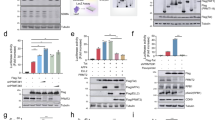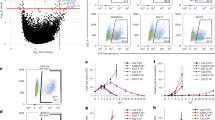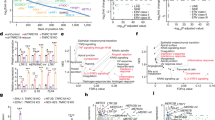Abstract
Epigenetic regulation of gene expression is critical in the maintenance of cellular homeostasis. Dysregulation of normal epigenetic transcription occurs in abnormal physiological conditions, such as those seen in cancer cells and cells infected with parasites, making the mechanism underlying abnormal epigenetic transcription of great interest. Gene expression of human T-cell leukemia virus type 1 (HTLV-1) is regulated by a viral transcriptional stimulator, Tax. We herein report a novel mechanism of transcription from the HTLV-1 long terminal repeat (LTR) that is regulated by Tax. In this study, we determined that Tax is able to activate transcription from the LTR, even when it was heavily methylated. In addition, the methyl-CpG-binding domain 2 (MBD2) protein played an important role in Tax-mediated transcriptional activation. We demonstrated the importance of a physical interaction between Tax and MBD2 in enhancing the transcriptional activity of Tax against the methylated LTR. Furthermore, we identified the formation of a protein complex composed of MBD2 and Tax bound to the methylated LTR. We propose a new model of epigenetic regulation by MBD2 acting in concert with a virally encoded transactivator, Tax. Our observation provides insight into the epigenetic regulation of gene expression and the diverse mechanisms of transcriptional regulation using methylated promoters.
This is a preview of subscription content, access via your institution
Access options
Subscribe to this journal
Receive 50 print issues and online access
$259.00 per year
only $5.18 per issue
Buy this article
- Purchase on Springer Link
- Instant access to full article PDF
Prices may be subject to local taxes which are calculated during checkout





Similar content being viewed by others
References
Akagi T, Ono H, Nyunoya H and Shimotohno K . (1997). Oncogene, 14, 2071–2078.
Ariumi Y, Kaida A, Hatanaka M and Shimotohno K . (2001). Biochem. Biophys. Res. Commun., 287, 556–561.
Ballestar E and Wolffe AP . (2001). Eur. J. Biochem., 268, 1–6.
Bhattacharya SK, Ramchandani S, Cervoni N and Szyf M . (1999). Nature, 397, 579–583.
Cervoni N and Szyf M . (2001). J. Biol. Chem., 276, 40778–40787.
Colgin MA and Nyborg JK . (1998). J. Virol., 72, 9396–9399.
Comb M and Goodman HM . (1990). Nucleic Acids Res., 18, 3975–3982.
Detich N, Theberge J and Szyf M . (2002). J. Biol. Chem., 277, 35791–35794.
Dignam JD, Lebowitz RM and Roeder RG . (1983). Nucleic Acids Res., 11, 1475–1489.
Dull T, Zufferey R, Kelly M, Mandel RJ, Nguyen M, Trono D and Naldini L . (1998). J. Virol., 72, 8463–8471.
Egger G, Liang G, Aparicio A and Jones PA . (2004). Nature, 429, 457–463.
Ego T, Ariumi Y and Shimotohno K . (2002). Oncogene, 21, 7241–7246.
Esteller M and Herman JG . (2002). J. Pathol., 196, 1–7.
Feng Q and Zhang Y . (2001). Genes Dev., 15, 827–832.
Fujita H, Fujii R, Aratani S, Amano T, Fukamizu A and Nakajima T . (2003). Mol. Cell. Biol., 23, 2645–2657.
Hendrich B and Bird A . (1998). Mol. Cell. Biol., 18, 6538–6547.
Iguchi-Ariga SM and Schnaffner W . (1989). Genes Dev., 3, 612–619.
Jeang KT, Giam CZ, Majone F and Aboud M . (2004). J. Biol. Chem., 279, 31991–31994.
Jeang KT, Widen SG, Semmes IV OJ and Wilson SH . (1990). Science, 247, 1082–1084.
Kibler KV and Jeang KT . (2001). J. Virol., 75, 2161–2173.
Koiwa T, Hamano-Usami A, Ishida T, Okayama A, Yamaguchi K, Kamihira S and Watanabe T . (2002). J. Virol., 76, 9389–9397.
Kwok RP, Laurance ME, Goldman PS, Shin H, Connor LM, Marriott SJ and Goodman RH . (1996). Nature, 380, 642–646.
Lemasson I, Polakowski NJ, Laybourn PJ and Nyborg JK . (2002). J. Biol. Chem., 277, 49459–49465.
Lemasson I, Polakowski NJ, Laybourn PJ and Nyborg JK . (2004). Mol. Cell. Biol., 24, 6117–6126.
Lu H, Pise-Masison CA, Linton R, Park HU, Schiltz RL, Sartorelli V and Brady JN . (2004). J. Virol., 78, 6735–6743.
Matsuoka M . (2003). Oncogene, 22, 5131–5140.
Miyoshi H, Blomer U, Takahashi M, Gage FH and Verma IM . (1998). J. Virol., 72, 8150–8157.
Nambu Y, Sugai M, Gonda H, Lee CG, Katakai T, Agata Y, Yokota Y and Shimizu A . (2003). Science, 302, 2137–2140.
Naldini L, Blomer U, Gallay P, Ory D, Mulligan R, Gage FH, Verma IM and Trono D . (1996). Science, 272, 263–267.
Ng HH, Zhang Y, Hendrich B, Johnson CA, Turner BM, Erdjument-Bromage H, Tempst P, Reinberg D and Bird A . (1999). Nat. Genet., 23, 58–61.
Nicot C and Harrod R . (2000). Mol. Cell. Biol., 20, 8580–8589.
Nicot C, Mahieux R, Pise-Masison C, Brady J, Gessain A, Yamaoka S and Franchini G . (2001). Mol. Cell. Biol., 21, 7391–7402.
Nosaka T, Ariumi Y, Sakurai M, Takeuchi R and Hatanaka M . (1993). Nucleic Acids Res., 21, 5124–5129.
Palvimo JJ, Eisenberg LM and Janne OA . (1991). Nucleic Acids Res., 98, 3921–3927.
Santos F, Hendrich B, Reik W and Dean W . (2002). Dev. Biol., 241, 172–182.
Stirzaker C, Song JZ, Davidson B and Clark SJ . (2004). Cancer Res., 64, 3871–3877.
Tanaka Y, Lee B, Inoi T, Tozawa H, Yamamoto N and Hinuma Y . (1986). Int. J. Cancer, 37, 35–42.
Tanaka Y, Yoshida A, Tozawa A, Shida H, Nyunoya H and Shimotohno K . (1991). Int. J. Cancer, 48, 623–630.
Uchiyama T . (1997). Annu. Rev. Immunol., 15, 15–37.
Wade PA . (2001). BioEssays, 23, 1131–1137.
Walton KM, Rehfuss RP, Chrivia JC, Lochner JE and Goodman RH . (1992). Mol. Endocrinol., 6, 647–655.
Yoshida M . (2001). Annu. Rev. Immunol., 19, 475–496.
Yoshida M, Nosaka K, Yasunaga J, Nishikata I, Morishita K and Matsuoka M . (2004). Blood, 103, 2753–2760.
Acknowledgements
We thank Dr H Miyoshi for kindly providing the lentivirus-based gene expression system, Dr M Hatanaka for the pH2R-Tax expression plasmid, Dr M Maeda for ATL43Tb(−) cells, and Dr T Watanabe for MT-1 and TL-Om1 cells. We also thank Drs M Hijikata, K Watashi, and T Ohshima for their helpful discussion, and Ms N Umehara for supporting our work. This work was supported by grants-in-aid for research for the future from the Japan Society for the Promotion of Science and for Scientific Research from the Ministry of Education, Culture, Sports, Science, and Technology of Japan.
Author information
Authors and Affiliations
Corresponding author
Rights and permissions
About this article
Cite this article
Ego, T., Tanaka, Y. & Shimotohno, K. Interaction of HTLV-1 Tax and methyl-CpG-binding domain 2 positively regulates the gene expression from the hypermethylated LTR. Oncogene 24, 1914–1923 (2005). https://doi.org/10.1038/sj.onc.1208394
Received:
Revised:
Accepted:
Published:
Issue Date:
DOI: https://doi.org/10.1038/sj.onc.1208394
Keywords
This article is cited by
-
MeCP2… Nature’s Wonder Protein or Medicine’s Most Feared One?
Current Genetic Medicine Reports (2016)
-
Genomic Impact, Chromosomal Distribution and Transcriptional Regulation of HERV Elements
Molecules and Cells (2012)
-
DNA methylation and methyl-CpG binding proteins: developmental requirements and function
Chromosoma (2009)
-
The HTLV-1 Tax interactome
Retrovirology (2008)
-
CpG island promoter methylation and silencing of 14-3-3σ gene expression in LNCaP and Tramp-C1 prostate cancer cell lines is associated with methyl-CpG-binding protein MBD2
Oncogene (2006)



